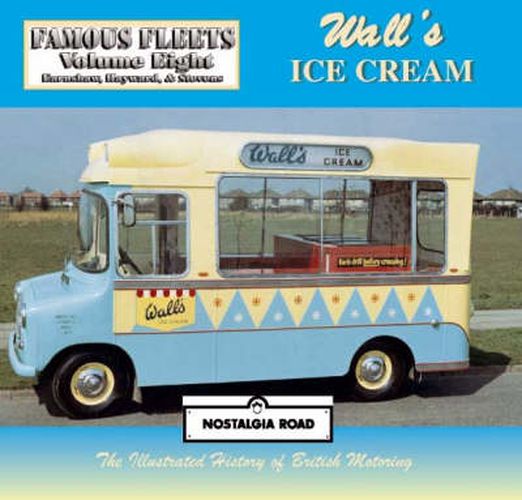Readings Newsletter
Become a Readings Member to make your shopping experience even easier.
Sign in or sign up for free!
You’re not far away from qualifying for FREE standard shipping within Australia
You’ve qualified for FREE standard shipping within Australia
The cart is loading…






Everybody likes ice-cream, and there can be few names as big as Wall’s in the European ice-cream industry. Now, part of the giant Unilever Ice Cream and Frozen Foods division, the Wall’s brand is instantly recognised as a market leader. A position it has held since its venture into the frozen confectionary business as a seasonal diversification to its core business, cooked meats, sausages and pies in the early 1920s. In this book, Alan Earnshaw, David Hayward and Chris Stevens chart the company’s reasons for diversification, and the way they began distributing their products. The story continues after the war, when to get around rationing and other regulations, Wall’s sold their products under the slogan Omore than a treat a food’. In the post-war period, the firm could sell more ice cream than it could produce, and this continued down to the late-1950s, when the Osoft ice-cream’ craze swept in from the USA, with Mister Softee and Mr.Whippy vans taking to the streets of Britain. So dangerous was this threat to Wall’s and Lyons Maid, the other main producers, that the two new brands were acquired, so Wall’s bought out Mr.Whippy. By the mid-1970s the sales of ice-cream products in supermarkets and home freezer-ownership had radically altered the Omobiling’ market, and since then there has been a progressive decline in the number of ice-cream vans patrolling our streets.
$9.00 standard shipping within Australia
FREE standard shipping within Australia for orders over $100.00
Express & International shipping calculated at checkout
Everybody likes ice-cream, and there can be few names as big as Wall’s in the European ice-cream industry. Now, part of the giant Unilever Ice Cream and Frozen Foods division, the Wall’s brand is instantly recognised as a market leader. A position it has held since its venture into the frozen confectionary business as a seasonal diversification to its core business, cooked meats, sausages and pies in the early 1920s. In this book, Alan Earnshaw, David Hayward and Chris Stevens chart the company’s reasons for diversification, and the way they began distributing their products. The story continues after the war, when to get around rationing and other regulations, Wall’s sold their products under the slogan Omore than a treat a food’. In the post-war period, the firm could sell more ice cream than it could produce, and this continued down to the late-1950s, when the Osoft ice-cream’ craze swept in from the USA, with Mister Softee and Mr.Whippy vans taking to the streets of Britain. So dangerous was this threat to Wall’s and Lyons Maid, the other main producers, that the two new brands were acquired, so Wall’s bought out Mr.Whippy. By the mid-1970s the sales of ice-cream products in supermarkets and home freezer-ownership had radically altered the Omobiling’ market, and since then there has been a progressive decline in the number of ice-cream vans patrolling our streets.